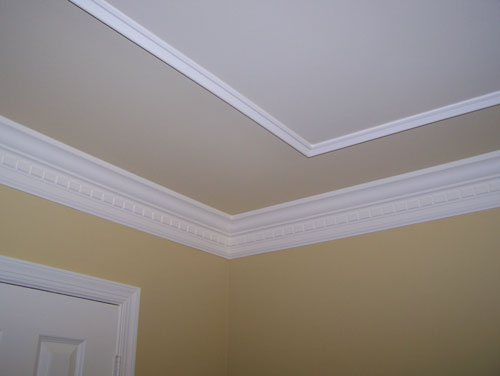[vc_row][vc_column][vc_column_text]
How to Remove Textured “Popcorn” Ceilings
Textured popcorn ceilings went out of style years ago, but many older homes—and some new ones—still have them. While taking down a textured ceiling is not that difficult, it is a messy job that requires hard work and special safety precautions.
Hazards
There are two potential problems that can turn removing a textured ceiling into a DIY nightmare:
- Asbestos: Acoustic texture manufactured before 1980 may contain asbestos and should be tested before being removed. While it doesn’t pose a health risk if left in place, removing a ceiling containing asbestos can stir up the fibers and cause them to become trapped in your lungs. More information about the dangers of Asbestos in Your Home can be found on the Environmental Protection Agency website.
- Painted Ceiling: Another potential problem that can make removing a popcorn ceiling much more difficult is if paint has been applied over the texture. This prevents the texture from absorbing water, which is necessary to loosen the material. While a painted textured ceiling can be removed, it usually requires the application of a chemical stripper to breakdown the paint barrier.
To determine if either of these conditions applies to your ceiling, combine a few drops of liquid dishwashing soap with warm water in a hand sprayer. Lightly spray a small spot in an inconspicuous location, and wait a few minutes for it to absorb the water. If the water will not soak in, the ceiling has been painted. Otherwise, the texture should come off easily.
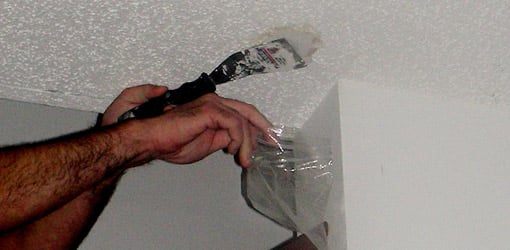
To test ceiling texture applied before 1980 for asbestos, use a putty knife to scrape a small amount into a sealable plastic bag. If you’re concerned about the possible health risks involved in taking the sample, a testing service can be hired to come out and take it for you.
Send the sample to an approved testing service to see if it contains asbestos. To find a testing service in your area, contact the state environmental or health office. A directory of state offices can be found on the EPA website.
If the material is found to contain over 1% asbestos then by law you can not remove it yourself and will need to contact a professional asbestos removal company or leave the ceiling as is. Even if it doesn’t contain asbestos, it’s important to wear an appropriate dust mask or respirator when removing the ceiling.
Equipment
To do the job you will need:
- Plastic sheeting (2-3 mil for walls, 6 mil for floors)
- Rosin paper
- Painter’s tape
- Rags
- Putty knife
- Pump up sprayer
- Liquid dishwashing soap
- 6” or wider floor scraper
- Mesh sanding pad with handle
- Drywall joint compound
- Drywall joint tape
- Dust mask or respirator
- Coveralls
- Eye protection
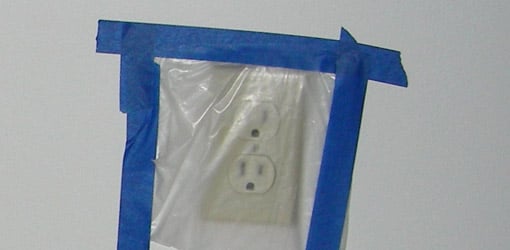
Preparation
Removing a textured ceiling is a messy job so good prep work is important to keep from damaging your walls or floor and to make clean up easier.
- Remove all furniture from the room.
- Turn off the heating or cooling system and close any vents. Ceiling vents should be removed and covered with plastic.
- Turn off the power to the room and remove any ceiling lights or paddle fans.
- Cover wall outlets and switches with plastic, sealing them with painter’s tape.
- Cover the floor with plastic, extending it a foot up the wall and attaching it with painter’s tape.
Cover floor with plastic before spraying ceiling, and secure to walls with painter’s tape.
- Run painter’s tape on the wall around the ceiling along the walls and attach the 2-3 mil plastic sheeting to it, overlapping the plastic along the bottom of the wall.
- To assist in clean up, cover the floor with rosin paper, overlapping the sheets and taping them together.
Run painter’s tape around the walls next to the ceiling, and attach plastic sheets to it.
Getting It Down
Be sure to wear a dust mask or respirator and safety glasses, and keep the part of the ceiling you are working on damp to reduce dust.
- If your ceiling wasn’t painted, fill a pump up sprayer with warm water and add 2-3 tablespoons of dishwashing soap per gallon of water.
- Saturate a 4-6 foot square section of the ceiling with the solution. Wet it enough to loosen it, but not so much that it damages the drywall under the texture.
- Wait 15-20 minutes for the solution to be absorbed by the texture material.
- Use a floor scraper, or other wide bladed tool, to gently scrape away the popcorn texture. Be careful not to gouge the drywall or tear the drywall joint tape.
- If the texture proves difficult to remove, spray it again, wait a few minutes, and try again.
- Use a putty knife to remove any residual material as well as to get into the corners.
Using a scraper to remove wet ceiling texture.
Repairs and Finishing Touches
You’ll probably need to do some drywall finishing to the ceiling after the texture has been removed, including:
- Hammer any visible nails or screws below the surface and cover them with joint compound.
- Replace any damaged drywall tape and smooth out the joints with joint compound.
- Once the repair work has dried, sand the ceiling with a long handled mesh sanding pad. Sand only to remove the high spots, as too much sanding will damage the ceiling.
Sanding the ceiling with a long handled, drywall sanding pad.
- The final touch is to prime and paint the ceiling using latex ceiling paint.
A Great Workout
Removing that dated popcorn ceiling will save a trip to the gym by giving your arms and upper body a great workout. In addition to your bulging biceps, the smooth ceiling will add value in your house and make all the hard work worthwhile.
Source – http://www.todayshomeowner.com/removing-textured-popcorn-ceilings/
[/vc_column_text][/vc_column][/vc_row][vc_row][vc_column][mk_fancy_title strip_tags=”true” size=”36″ font_family=”none” align=”center”]Some Great Videos On How To Remove Popcorn Ceiling:[/mk_fancy_title][vc_row_inner][vc_column_inner width=”1/3″][vc_video link=”https://www.youtube.com/watch?v=09Q4JQ3p8yg”][/vc_column_inner][vc_column_inner width=”1/3″][vc_video link=”https://www.youtube.com/watch?v=VzVpegoFV54″][/vc_column_inner][vc_column_inner width=”1/3″][vc_video link=”https://www.youtube.com/watch?v=lONjlVD17yU”][/vc_column_inner][/vc_row_inner][/vc_column][/vc_row]


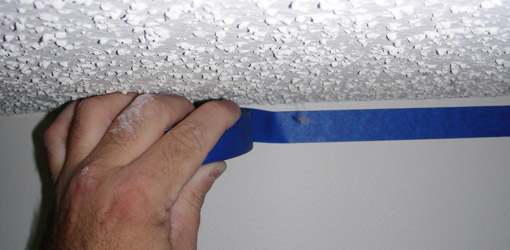

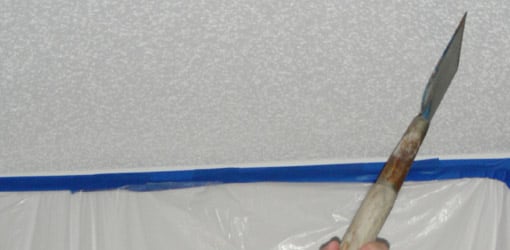
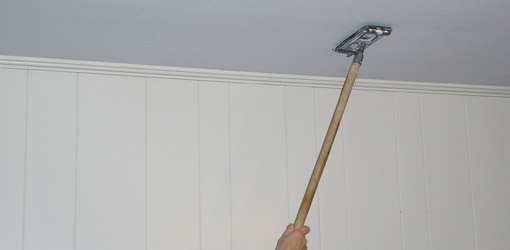


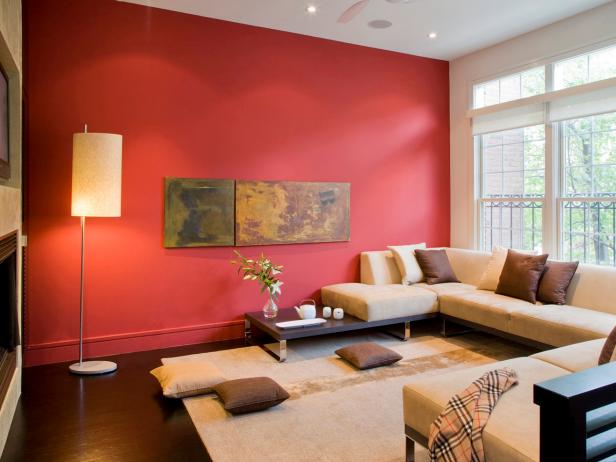


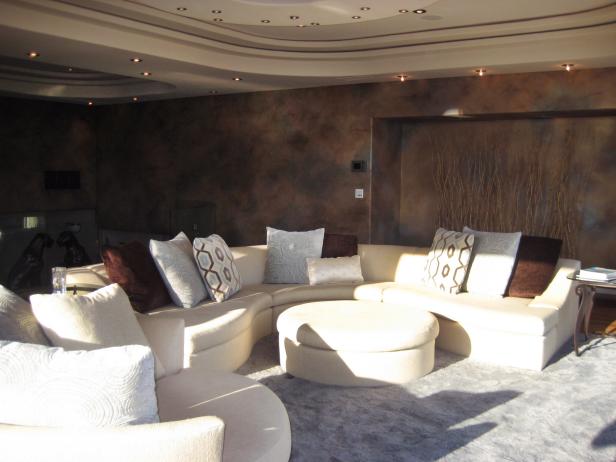

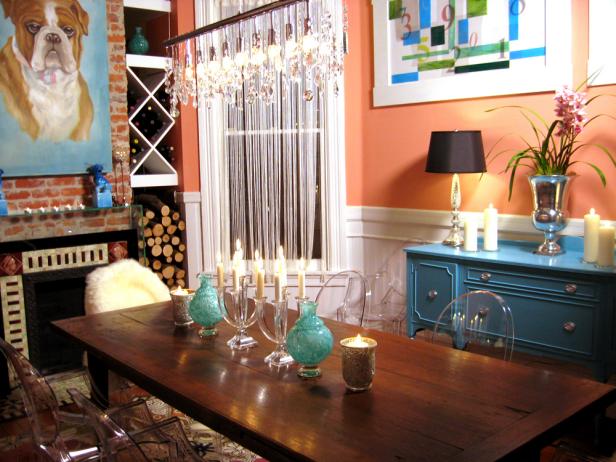
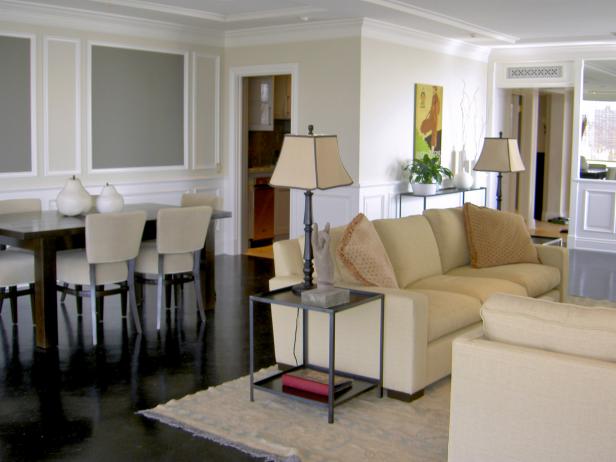
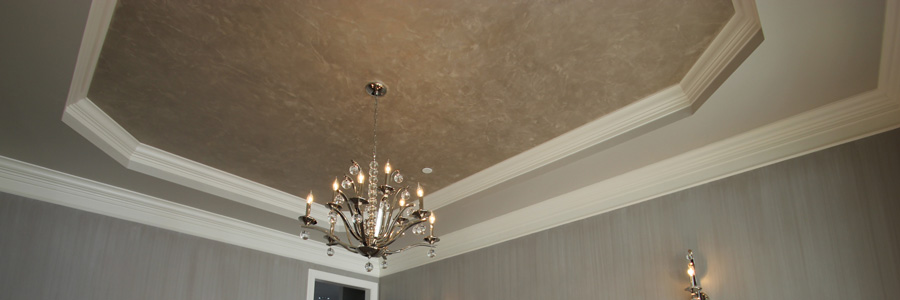
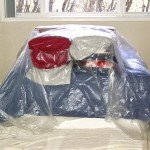 Cover the entire floor with
Cover the entire floor with 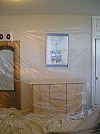 Remove the light fixtures if you are confident in doing so. If not, loosen the fixture so you can easily brush around it, dropping it a small distance from the ceiling.
Remove the light fixtures if you are confident in doing so. If not, loosen the fixture so you can easily brush around it, dropping it a small distance from the ceiling.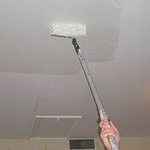
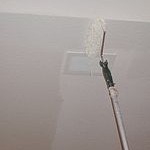
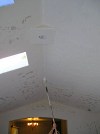 Painting a vaulted ceiling with a roller is exactly like painting a wall. Cut-in all edges including the peak. Brush the paint 4-6 inches out from the corners and pay special attention to areas that can’t be reached by the roller.
Painting a vaulted ceiling with a roller is exactly like painting a wall. Cut-in all edges including the peak. Brush the paint 4-6 inches out from the corners and pay special attention to areas that can’t be reached by the roller.






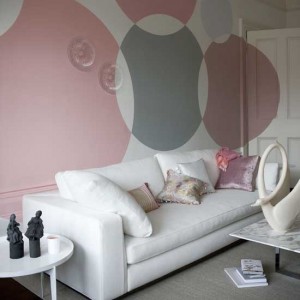 Purchasing:
Purchasing: